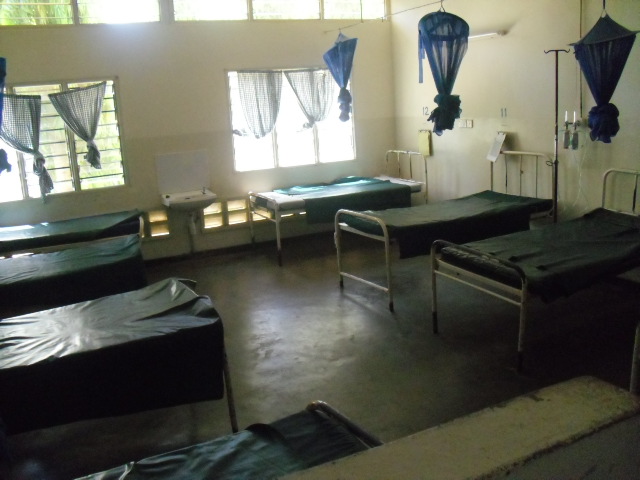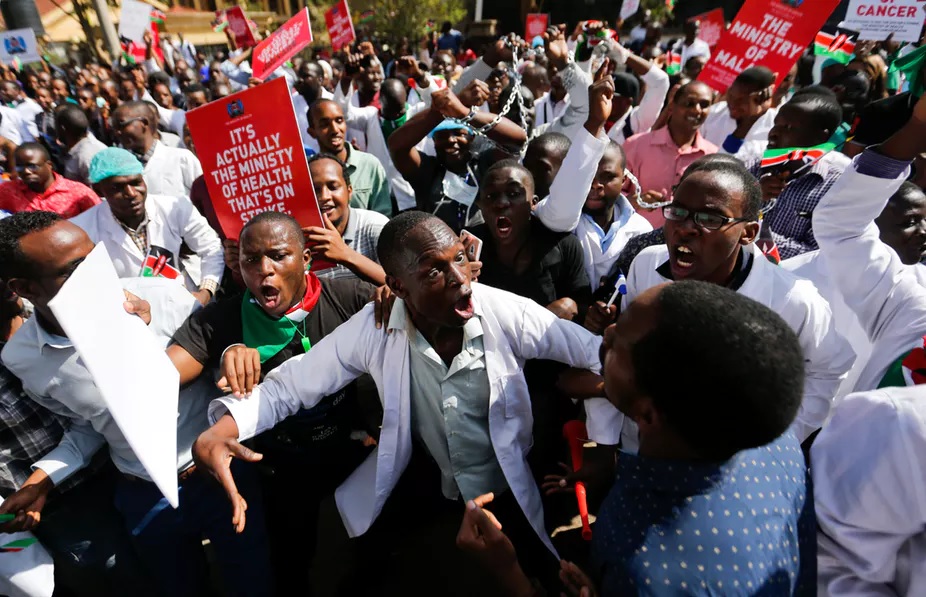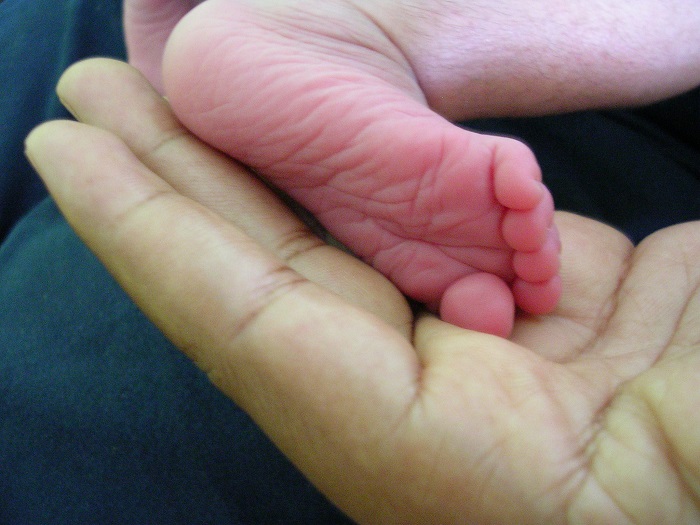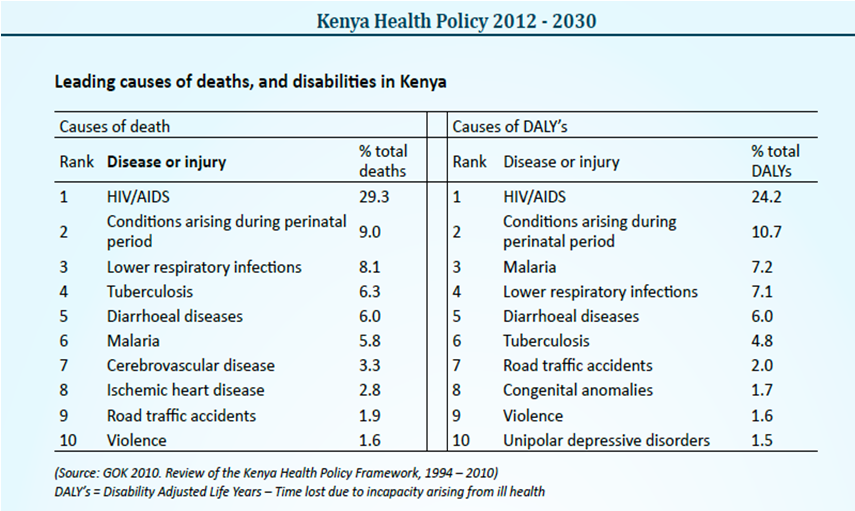
When health workers strike
Strikes by doctors and nurses have become part of the challenge of managing health care systems globally in the last two decades. In Kenya, most of the strikes have been about perceived poor renumeration and have usually not lasted long. The exception being in 2017 when the country experienced protracted strikes by both doctors and nurses. The impact of these strikes have been captured in media images of empty hospital beds and narratives of intense suffering of especially women in labour and children. The overall impact of the strikes are however not always clear.

Dr Anthony Etyang and colleagues at the Kenya Medical Research Institute, Wellcome Trust Research Program (KEMRI-WTRP) in Kilifi used data to provide sound evidence on the impact of these strikes. They analysed data collected from January 2010 to November 2016 from the region served by the Kilifi county Hospital, with a population of over 300,000 people. Fieldworkers at the KEMRI-WTRP collect 4-monthly information on deaths and births within this population and this information is linked to hospital data. As most deaths in the population occur at home and rarely recorded, this system allows researchers to know for certain the number of deaths that occur within this population.
Over the 7-year period (2010-2016), there were 6 doctor and/or nurse strikes which lasted between 9 and 42 days. During the strike periods, all health services were stopped but the intensive care unit for children (Pediatric high dependency unit) at the Kilifi county hospital, which is run by the KEMRI-WTRP, remained operational, admitting only the most critically ill children.
The researchers compared the deaths during periods of strike to those that occurred in other time periods. In a paper published in The Lancet Global Health journal (https://www.thelancet.com/journals/langlo/article/PIIS2214-109X(19)30188-3/fulltext), Dr Etyang report that there was no difference in the number of deaths in the community before, during and after the strikes. The results were surprising and the researchers have made a few speculations in an attempt to explain these findings.
One of the suggestions was that the data examined short duration strikes, perhaps a different conclusion would have been made if data from the longer 2017 strike was explored. The other possible explanation for these findings may have been the fact that critically ill children had access to care at the pediatric high dependency unit at the Kilifi County Hospital which is run by the KEMRI-WTRP.
One interesting feature of these findings is that they are in line with what has been observed in other high-income countries. David Metcalfe and colleagues at the Harvard Medical School published a report on the impact of health worker strikes in Canada, England, New Zealand, Spain and Croatia. They reported that although these strikes were, they did not lead to an increase in deaths. In all these cases, emergence services were maintained to take care of the critically ill.
However, the reality, in low-income countries like Kenya is that when health workers strike, there is no provision for emergency services. Kilifi County Hospital is an exception to the rule.
During doctor/nurse strikes, most Kenyans are forced to either use health facilities in the private sector or faith-based (mission) hospitals. The burden of disease is therefore transferred to these services and an analysis of what happens there might paint a fairer picture of the impact of doctor’s and nurses’ strikes.

Dr Mary Beth Adam and colleagues published a paper in BMJ Global Health journal (https://www.ncbi.nlm.nih.gov/m/pubmed/29662693/) that expounded on the impact of the 2017 health worker strike on one such facility, the AIC Kijabe mission hospital. Dr Adam and colleagues compared total deaths in the hospital in the 1-year period before the strike and those that occurred in what they called the 100-day strike of doctors from December 2016 to March 2017. The differences between the deaths that occurred over a full year with no strike and those that occurred over the 100 days of the strike were staggering.
Deaths among children in the newborn nursery, which admits children under one month rose from under 2% (20 deaths from 786 admissions) in the year prior to the strike to just under 10% (42 deaths from 434 admissions) during the strike. Deaths among children over a month old rose from about 4% (30 deaths from 792 admissions) in the year prior to the strike to about 13% (36 deaths from 271 admissions) during the 100-day strike. The number of women who delivered in the hospital in the year before the strike totalled 576, however in the 100 days of the strike, 1,077 women delivered in the hospital. During the strike, AIC Kijabe hospital delivered as many babies as they normally would over two years.
The AIC Kijabe mission hospital was stretched beyond capacity especially perhaps as a result of the fact that the country’s main referral hospital, the Kenyatta National Hospital, was not offering any services at all during this strike. In fact, the nurses at AIC Kijabe Hospital were so stretched that they went on a one-week strike to protest the unbearable burden. The hospital was forced to re-evaluate the criteria for admission and discharge all but the critically ill.
Unlike all other workers, when doctors and nurses go on strike, lives are put at risk. In most developed nations, this is abated by ensuring that all essential services are kept going. The strikes are still extremely disruptive to the health care system, but respect for human life is not lost in the process.
Health workers in Kenya however feel that unless the threat of the loss of human life is used, there strikes will be ineffective which raises the question: Is it ethical or morally justifiable for doctors and other healthcare workers to go on strike?’ The BMJ Medical Ethics journal published a paper by Professor Sylvester Chima with that title (https://www.ncbi.nlm.nih.gov/pmc/articles/PMC3878318/) In this paper, Prof. Chima argues that it is indefensible to deny anyone the right to strike. However, because it is the poor that are most affected by these strikes, he suggests that when health workers go on strike, they should provide emergency care to those who are critically ill. Such care could be agreed by the unions so that deaths of poor people cease to be a bargaining chip during health worker strikes. On the other hand, governments needs to move quickly to resolve disputes and avoid punitive approaches to resolve healthcare workers strikes.
What do you think?
……………………………………………
If you enjoyed reading this blog, please vote in the BAKE awards for ‘best public health blog’.
Kindly click here to vote
and go to…..
Comment
Comments are closed.





Linda
Something needs to be done in the health sector